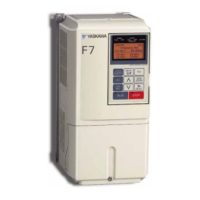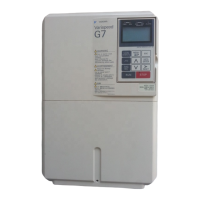What to do if my YASKAWA CIMR-F7A Inverter shows overcurrent?
- VVeronica LeeAug 20, 2025
If your YASKAWA Inverter displays an overcurrent error, it could be due to several reasons: * A short-circuit or ground fault at the Inverter output, potentially caused by motor damage, worn insulation, or cable issues. * An excessive load or too-short acceleration/deceleration time. * Use of an incompatible motor or one with too large a capacity. * Switching a magnetic contactor at the Inverter output. * A short-circuit between +V, -V, and AC terminals. * Overload in the control circuit terminal. After identifying and correcting the cause, reset the fault. Also, ensure that the wiring is correct.



